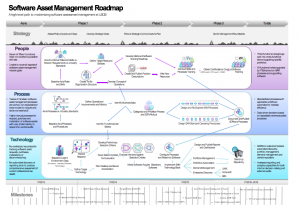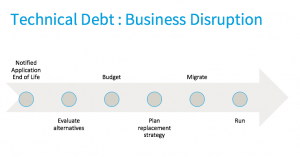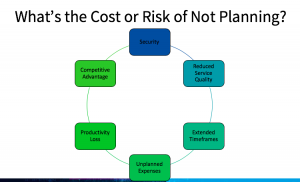Software licensing can be disordered, and understanding the risks involved can require a substantial amount of time. So how can agencies manage the chaos of software licensing and understand the potential perils?
GovLoop hosted an online training featuring Prentice Norman, Chief of Strategic Vendor Management at U.S. Citizenship and Immigration Services (USCIS), and Patricia Adams, Senior Director of Strategy Analysis at Flexera, on this very subject.
Norman briefly went over the Federal Information Technology Acquisition Reform Act (FITARA) and what USCIS was able to do with it in regards to software licensing and control the chaos.
“FITARA is really looking at cybersecurity through different measures or metrics,” Norman explained. “It’s very important, especially looking at yourself as a tax-paying individual. You want to make sure that the federal government is making the best use of your money.”
FITARA outlines greater visibility into IT expenditures, increased risk management ability, increased engagement of senior officials with regards to the oversight of IT investment and allows for greater authority to the federal government’s more than 250 Chief Information Officers (CIOs) to plan, confirm, and carry out IT acquisitions.
One of the measures of FITARA involves software licensing, but the Making Electronic Government Accountable By Yielding Tangible Efficiencies (MEGABYTE) Act of 2016 elaborated on that through the following factors:
- Policy: Creating a thorough software licensing policy pointing to the roles and responsibilities of management.
- Inventory: Use automated tools to establish an inventory of software licenses (including 80 percent of spending and license agreements).
- Analyze: Use the software license management lifecycle to analyze software usage, provide training, establish goals and objectives, and carrying out effective decision-making.
- Report: Quantify the results of improvements in software license management through a report to the Office of Management and Budget (OMB) detailing the financial savings or avoidance of spending.
“We were able to start years ago on things federal agencies have to deal with now,” Norman said. “We looked at things from a people perspective, from a technology perspective, and we put together this roadmap to control the chaos:

“We had $70 million in maintenance costs, up from $50 million,” he continued, “and we recognized as an agency that we had to get a handle on the legislation that was passed. We had a lot of smart people in the room, we did a quick analysis, we looked at the next five to seven years and worked with our security team. We looked at things from a big-picture perspective, and then put things into an operational view. We started hiring and training people up.”
Adams defined software licensing as a technology asset issue. “What is considered an asset today is evolving and broadening from what we would traditionally consider an asset,” she explained.
So how can customers optimize their assets? Gartner conducted a survey that found that 40 percent of IT spending is going towards software and hardware. “That’s a huge chunk that you want to get a hold of,” Adams said. “We help customers identify the waste in that area.”
The six waste factors are all outlined in MEGABYTE and FITARA:
- Underutilized resources/assets
- Shelf-ware
- Audit risk/true-up costs
- Shadow IT spend
- Application rationalization
- Legacy applications
Technical debt is also a problem. Adams defines this as “when an organization has invested so heavily in an application that it would take the stars aligning to remove them from it.” Technical debt can be found in applications 10+ years old that keep the business running, perhaps because of significant financial and business investment, and could be potentially unsupported.
Hackers have been known to identify vulnerabilities associated with using outdated technical applications. Adams confirmed that reducing technical debt ensures the security and protection of an environment, as well as the optimization of the environment.
The business disruption involved in managing technical debt starts with notification of the application’s end of life, and continues through migration and the ultimate running of the product:


“When you look at optimizing your technology assets, you want to assess the risk of the decision,” Adams stated. What’s the risk of planning for the change, and what’s the risk of not planning?
Flexera provides solutions for agencies struggling to keep up with the more than billion software licenses the government operates each year. “We can help organizations reduce waste, identify solutions, and take action,” Adams stated.
How is your agency dealing with software licensing management? Let us know in the comments below.
Photo Credit: Hack Capital on Unsplash






Leave a Reply
You must be logged in to post a comment.